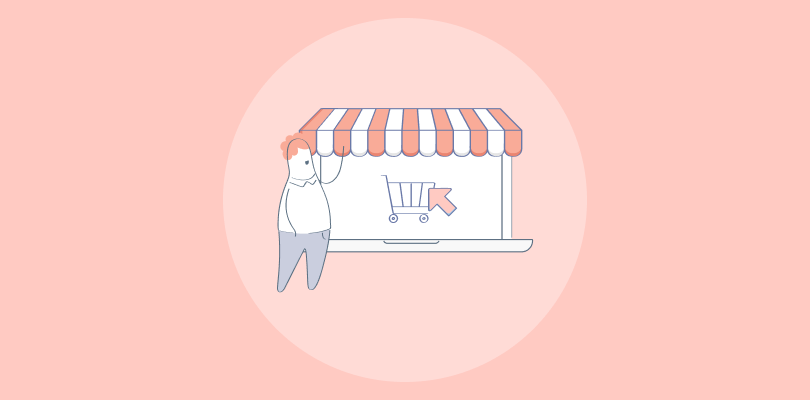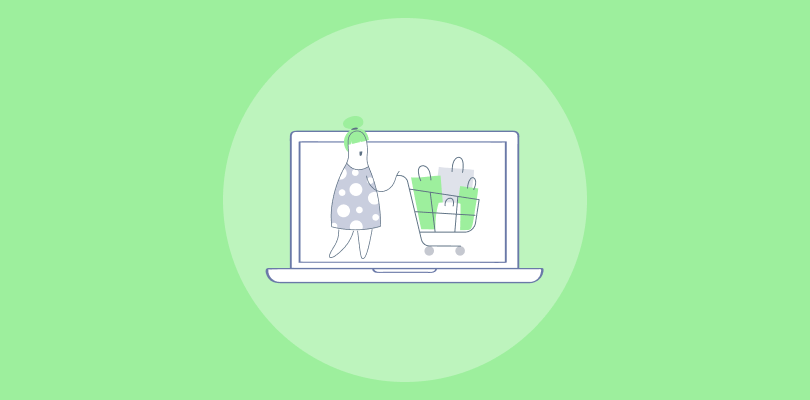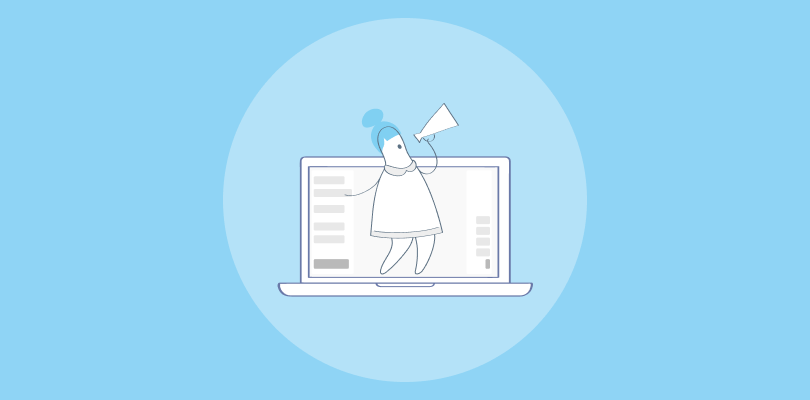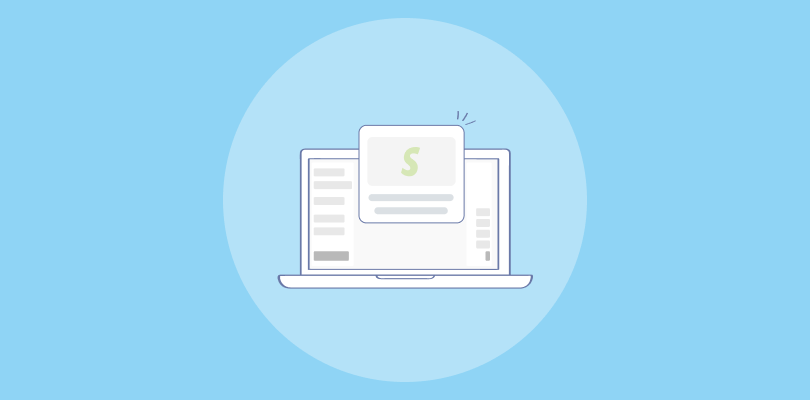
Starting a successful eCommerce business takes a lot of effort, and setting up a Shopify store is a crucial first step for me—and likely for you, too. However, while launching might seem straightforward, the real challenge is scaling the business. In this blog post, I will share practical strategies to help you learn how to get Shopify sales quickly.
But before I discuss the strategies, let’s quickly go through the reasons why your Shopify sales are going down!
Reasons Why You Are Getting Traffic But Not Sales
Before we explore the strategies, let’s understand the common challenges you might face:
- High Churn Rates: Customers quickly leave after initial purchases.
- Low Customer Engagement: Difficulty in engaging customers consistently.
- Inadequate Traffic: Struggling to attract enough visitors to your store.
- Poor Conversion Rates: Visitors do not turn into buyers.
- Inefficient Marketing: Marketing efforts that do not reach or resonate with the target audience.
- Lack of Customer Insights: Not having enough data to understand customer behaviors and preferences.
- Complex Checkout Processes: Checkout processes that are too complicated lead to abandoned carts.
- Unforeseen Market Changes: Failing to adapt to sudden shifts in market trends or consumer demands.
These challenges can impede the growth of your Shopify store if not addressed strategically.
How to Generate Sales on Shopify: 12 Best Strategies That Work
Here are some of the best strategies on how to get Shopify sales. I developed these strategies based on thorough analysis and hands-on experience in the ecommerce industry. I combined insights from successful Shopify store owners, up-to-date market research, and tried-and-tested marketing techniques. My approach focuses on what truly drives sales, from optimizing the user experience to implementing effective digital marketing campaigns. This ensures that both new and established store owners can achieve better sales outcomes.
1. Target Your Ideal Audience for Laser-Focused Marketing
Laser focus on your ideal customer ensures your marketing efforts resonate and attract qualified leads. This translates to higher conversion rates, increased customer lifetime value (CLTV), and reduced marketing spend. By understanding their needs, wants, and online behavior, you can tailor your messaging, product offerings, and overall brand experience to speak directly to them. This builds stronger customer relationships and loyalty.
How to Implement
- Analytics Tools: Use Shopify Analytics or Google Analytics to understand your existing customer base (demographics, interests, purchase behavior).
- Market Research: Conduct surveys or polls to gather data on your target market. Tools like Google Surveys or social media polls can be helpful.
- Buyer Personas: Create detailed profiles of your ideal customers, including their pain points, desires, and online behavior.
To effectively target your ideal audience for laser-focused marketing, leverage the power of market research solutions like web scraping. Using Python for web scraping, the most popular programming language for this purpose, enables you to gather valuable data from sources such as social media. This data provides deep insights into your target market’s demographics, interests, and purchasing behavior, allowing you to tailor your marketing strategies with precision and maximize conversion rates.
2. Craft a Unique Selling Proposition That Sets You Apart
A strong USP differentiates you from competitors, grabs customer attention, and clarifies why someone should choose you. It directly impacts your brand perception and buying decisions. A well-defined USP positions you as the go-to solution for a specific customer problem and builds trust and credibility.
How to Implement
- Competitor Analysis: Research your competitors to identify their strengths and weaknesses. This helps you position your brand effectively.
- Value Proposition Canvas: This strategic planning tool helps you clearly define your value proposition, outlining the benefits you deliver, the customer problems you solve, and how you differ from competitors.
- Focus on Benefits: Don’t just list features; translate them into tangible benefits for your customers.
3. Optimize Your Store for Conversions and a Stellar User Experience
The average e-commerce conversion rate was 2.59% in Q4 2023, which was a 5.8% drop from the previous year.
In order to increase this, businesses should focus on optimizing their stores. A smooth, user-friendly experience keeps visitors engaged, minimizes purchase friction, and leads to more conversions. This is one of the best ways to get sales on Shopify.
By creating a visually appealing and intuitive store layout, you encourage exploration and make it easy for customers to find what they’re looking for. Fast loading speeds and a transparent checkout process further enhance the customer experience, which reduces cart abandonment and boosts sales.
With dropshipping, you can offer a broader range of products without the need for physical inventory, allowing you to test and optimize your store’s offerings based on customer feedback and analytics, further enhancing the user experience. This strategic approach is crucial for mastering how to get sales on Shopify using dropshipping.
How to Implement
- Shopify Themes: Choose a visually appealing and mobile-friendly theme that aligns with your brand. Shopify offers a wide range of free and paid themes.
- High-Quality Product Photos: Showcase your products with professional-looking photos from multiple angles. Consider 360-degree views and zoom functionality.
- Clear and Concise Product Descriptions: Provide detailed descriptions highlighting features, benefits, and specifications. Optimize for search engines using relevant keywords.
- Fast Loading Speeds: Ensure your store loads quickly on all devices. Use tools like Google PageSpeed Insights to identify and fix performance bottlenecks.
- Simplified Checkout Process: Minimize steps and offer guest checkout options for faster transactions. Consider integrating popular payment gateways like Stripe or PayPal.
4. Harness the Power of Strategic Popups
Well-timed popups can capture valuable leads (email addresses for future marketing campaigns), promote special offers to drive sales, and encourage abandoned cart recovery, re-engaging potential customers who haven’t completed their purchase. When used strategically and with a clear value proposition, popups can be a powerful tool to increase brand awareness, generate leads, and ultimately drive sales. Read this popup guide to know more.
How to Implement
- Popup Apps: Shopify App Store offers a variety of popup apps with features like exit-intent popups, timed popups, and discount popups.
- Target Your Popups: Personalize popups based on visitor behavior or browsing activity.
- Don’t Overdo It: Intrusive popups can annoy visitors. Use them strategically and offer a clear value proposition.
5. Engage Visitors and Build Trust with Onsite Messaging
If given the choice, 62% of consumers would prefer to talk to a chatbot rather than wait 15 minutes for a human agent’s response.
Proactive communication through website notifications and chatbots builds trust with visitors, keeps them engaged, and addresses concerns before they become roadblocks to conversion. It personalizes the shopping experience and demonstrates that you care about your customers. By being readily available to answer questions and offer assistance, you can alleviate purchase anxiety and increase customer confidence. This will help you grow Shopify sales quickly.
How to Implement
- Website Notification Apps: Utilize apps to send targeted website notifications with greetings, special offers, or reminders about abandoned carts.
- Chatbots: Implement a chatbot to answer basic questions, offer product recommendations, and provide real-time support. Shopify offers built-in chat functionality and various chatbot apps.
6. Master Email Marketing to Nurture Leads and Drive Sales
“Email has an ability many channels don’t: creating valuable, personal touches – at scale.” – David Newman
Email marketing is a powerful tool for nurturing leads, promoting products, and driving repeat business. If you are wondering how to get buyers on Shopify, this could be a great strategy. It allows for targeted communication based on customer behavior and interests, leading to higher engagement rates and conversions. By building an email list and sending personalized campaigns, you can stay top-of-mind with potential customers, educate them about your products, and ultimately convert them into paying customers.
Also Read: 17 Simple Tips to Boost Email Marketing
How to Implement
- Email Marketing Apps: Integrate your Shopify store with an email marketing platform like Mailchimp or Klaviyo.
- Build Your Email List: Encourage visitors to subscribe with signup forms, lead magnets (free ebooks, discounts), and post-purchase opt-ins.
- Segmentation: Segment your email list based on customer behavior and interests for targeted campaigns with higher engagement rates.
As per statistics, the most effective strategies for email campaigns include segmentation (78%), message personalization (72%), and email automation campaigns (71%). - Email Automation: Set up automated email sequences for abandoned carts, welcome emails, and promotional campaigns.
7. Harness the Amplifying Power of Social Media
Social media is a fantastic platform for connecting with your audience on a personal level. It showcases your brand personality and drives traffic to your store. It allows you to tap into a vast potential customer base and build a community around your brand. Social media engagement helps build brand awareness, loyalty, and trust. By sharing engaging content and strategically utilizing social commerce features, you can convert followers into customers.
How to Implement
- Focus on High-Quality Content: Create engaging content like product photos, lifestyle images, informative videos, and interactive polls.
- Run Social Media Ads: Utilize paid advertising options on social media platforms to target specific demographics and interests with laser precision.
- Social Commerce Features: Use built-in social commerce features like Instagram Shopping and Facebook Shops to allow customers to purchase directly from your social media pages.
8. Leverage Partnerships and Influencer Outreach
Brand partnerships that use digital channels can see up to 4 times the pipeline compared to non-digital partnerships. Collaborating with complementary businesses or influencers exposes you to a wider audience, leverages their existing audience trust, and builds brand credibility. This can significantly boost sales on Shopify and brand awareness. Partnerships and influencer marketing allow you to tap into a new audience segment that already trusts the partner or influencer. By creating compelling content together, you can generate excitement about your brand and drive sales.
How to Implement
- Identify Potential Partners: Look for businesses or influencers that align with your brand values and target audience.
- Reach Out and Negotiate: Develop a mutually beneficial partnership with clear goals and expectations. Offer product reviews, sponsored content creation, or co-hosted giveaways.
- Affiliate Marketing Programs: Consider setting up an affiliate marketing program where partners earn commissions for promoting your products.
9. Run Targeted Ad Campaigns for Fast Results
Paid advertising on platforms like Google Ads and social media allows you to target specific demographics with laser precision. It’s a powerful way to reach new customers who are actively searching for products like yours and generate targeted traffic to your store. If you’re looking for effective strategies on how to make money in Shopify, paid advertising is an excellent approach to consider. Reach potential customers at the exact moment they’re interested in what you offer, significantly increasing the conversion chances. Paid advertising is a great way to jumpstart your sales efforts and reach a wider audience.
Also Read: How to Improve Conversion Rate for Your Shopify Store in 2024
How to Implement
- Define Your Target Audience: Clearly identify the characteristics of your ideal customer to ensure your ads reach the right people.
- Choose the Right Platform: Select advertising platforms based on your target audience and budget.
- Craft Compelling Ad Copy: Write clear, concise, and attention-grabbing ad copy that highlights your USP and includes a solid call to action.
- Landing Page Optimization: Ensure your landing pages (where users arrive after clicking your ad) are optimized for conversions with a clear value proposition and a seamless buying journey.
10. Conduct A/B Testing for Conversions
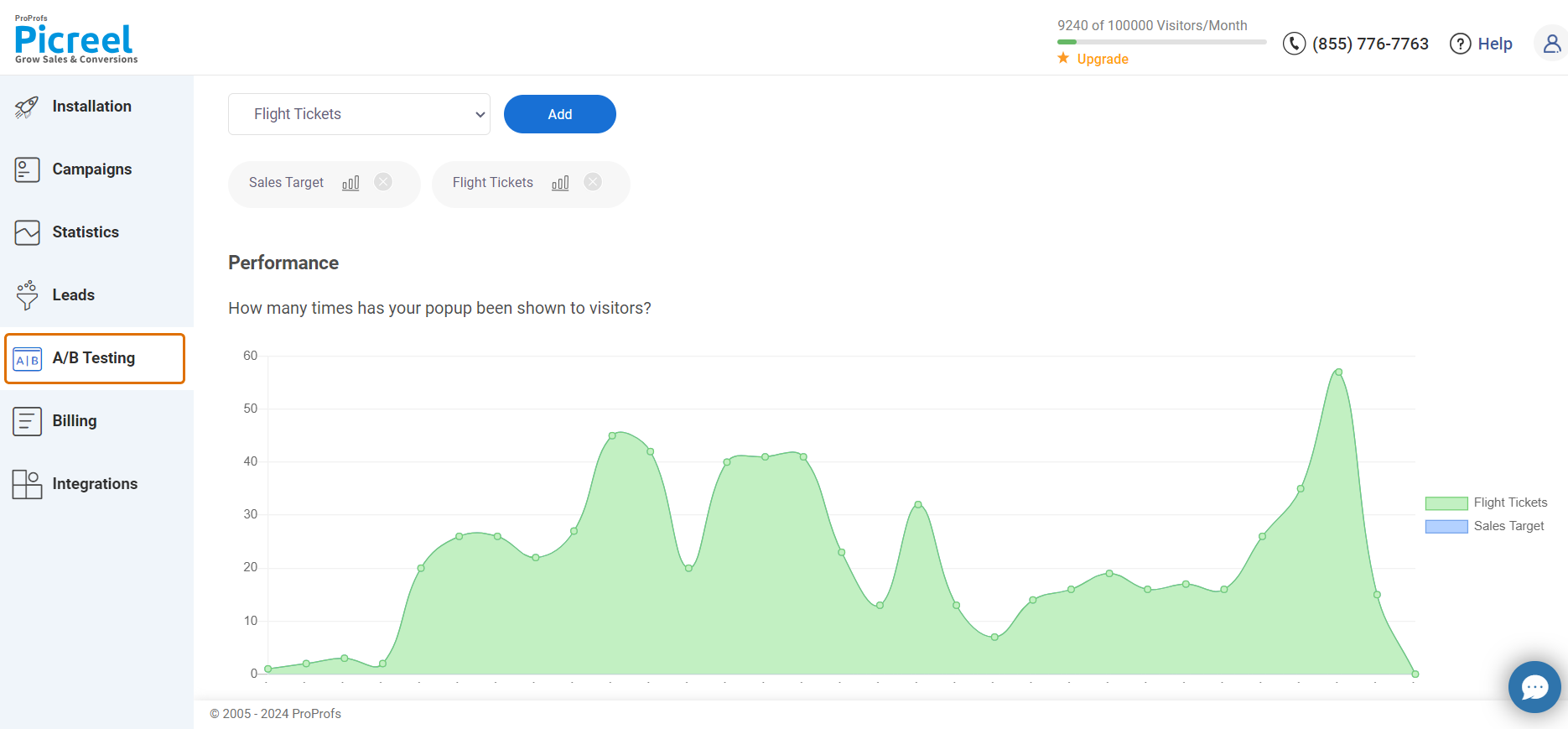
A/B testing is one of the best ways to increase sales on Shopify. It allows you to compare different elements of your store and marketing campaigns to see what resonates best with your audience. This data-driven approach helps you optimize your store for maximum conversions and improve your return on investment (ROI). By testing different variations and analyzing the results, you can identify what works best for your audience and continuously improve your conversion rates.
Also Read: 9 Simple A/B Tests You Should Perform for Higher Conversions
How to Implement
- Shopify A/B Testing: Shopify offers built-in A/B testing functionality. You can test different versions of product pages, email subject lines, and popups.
- Focus on One Variable at a Time: Only change one element at a time during A/B testing to isolate the impact of the change.
- Analyze the Results: Once the test is complete, analyze the data to see which version performed better and implement the winning variation.
11. Unleash the Power of Content Marketing
Valuable content positions you as a niche authority. Informative blog posts, articles, or videos educate your target audience and attract organic traffic through search engines. This builds trust, boosts brand awareness, and drives sales in the long run. Consistent content creation establishes you as a thought leader, making your audience more likely to choose you.
Also Read: How To Use Content To Increase Conversions
How to Implement
- Content Strategy: Develop a content strategy that aligns with your target audience’s interests and search intent.
- Keyword Research: Use keyword research tools to identify relevant keywords that your target audience is searching for.
- Create High-Quality Content: Publish informative and engaging content that provides value to your readers and positions you as a thought leader.
- SEO Optimization: Optimize your content for search engines by including relevant keywords naturally throughout the text and using proper meta descriptions and title tags.
12. Offer Real-Time Support with Live Chat
Live chat builds trust by offering real-time support. It addresses customer concerns quickly, reducing purchase friction and increasing conversions. By providing immediate assistance, you personalize the shopping experience and show you prioritize customer satisfaction. This translates to happier customers, fewer abandoned carts, and, ultimately, a boost in sales.
How to Implement
- Live Chat Apps: Integrate your Shopify store with a live chat app that allows you to communicate with visitors in real time. Shopify offers built-in chat functionality and various live chat apps.
- Train Your Team: Ensure your customer support team is well-trained to answer questions effectively and provide exceptional service.
Ready to Generate Sales on Shopify?
Growing your Shopify store and achieving consistent sales requires a multi-pronged approach. By implementing strategies on how to get Shopify sales, you can attract new customers, nurture leads, and convert them into loyal buyers. Remember, success is a journey, not a destination.
To truly maximize the potential of your Shopify store, consider integrating Picreel. This powerful tool captures visitors’ attention with tailored offers and messages, turning them into subscribers and customers. With Picreel, you can effortlessly create engaging pop-ups and overlays that resonate with your audience, ensuring that every visit has the best chance to convert. Remember, with the right tools and strategies, your path to e-commerce success is well within reach.
Frequently Asked Questions
What are some common Shopify sales mistakes, and how can I avoid them?
One common mistake is neglecting mobile optimization, which can alienate a large portion of potential customers who shop via mobile devices. Ensure your Shopify store is responsive and mobile-friendly. Another mistake is having a complex checkout process; simplify this to minimize cart abandonment. Additionally, failing to use SEO effectively can limit your store’s visibility. Optimize product descriptions, images, and metadata with targeted keywords to improve search rankings. Regularly analyze your store’s data to adapt strategies and avoid these pitfalls.
My products are visually appealing. How can I showcase them to drive Shopify sales?
To highlight your visually appealing products and drive sales, invest in high-quality, professional photography that captures the details and unique qualities of each item. Use Shopify’s feature, which allows multiple image uploads per product to show different angles and details. Consider adding video content or a 360-degree view to give customers a better feel for the product. Use visually-driven platforms like Instagram or Pinterest to reach a wider audience. Ensure your website design complements and enhances your product visuals to provide a cohesive and attractive shopping experience.
FREE. All Features. FOREVER!
Try our Forever FREE account with all premium features!



